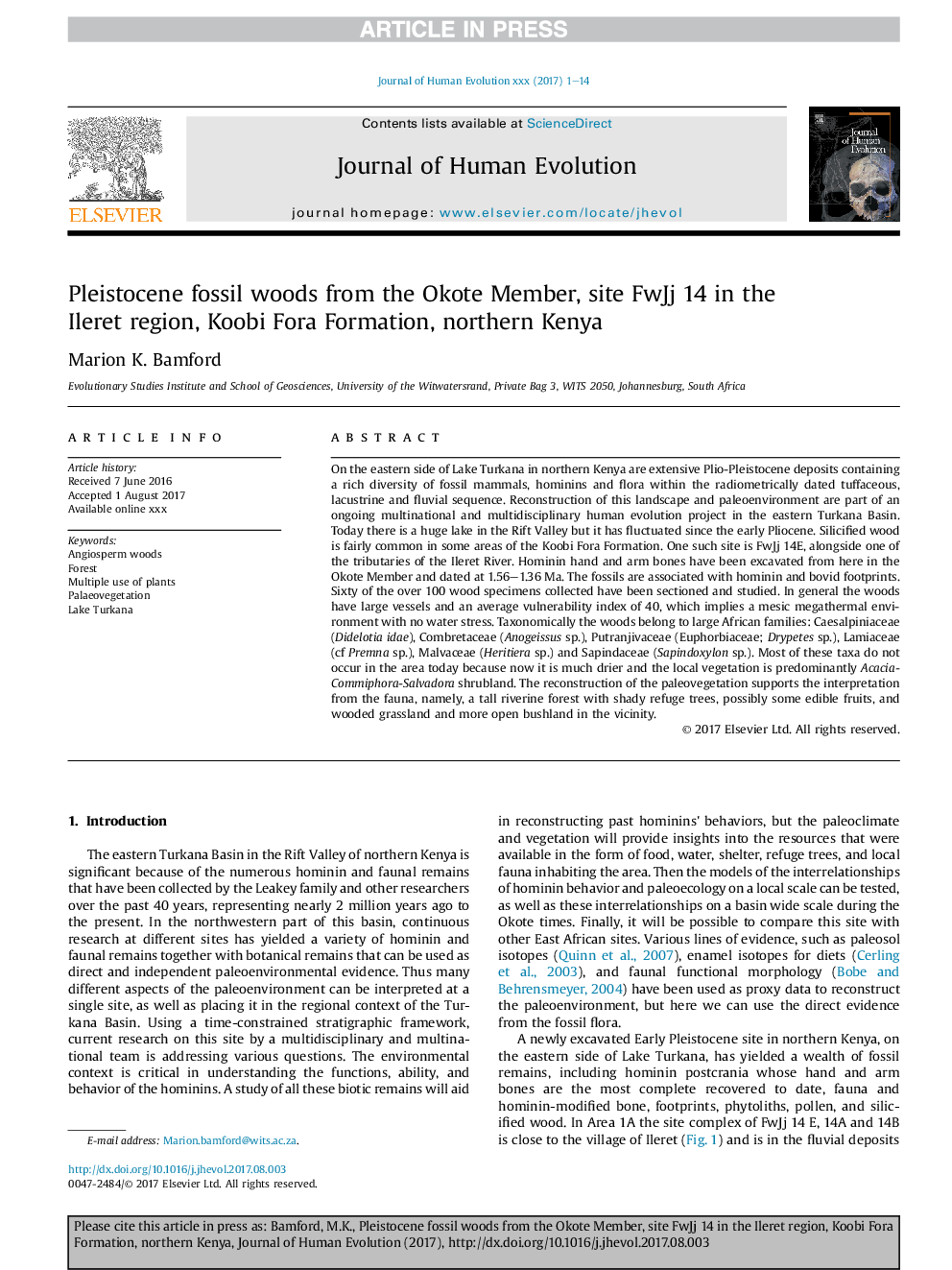| کد مقاله | کد نشریه | سال انتشار | مقاله انگلیسی | نسخه تمام متن |
|---|---|---|---|---|
| 5766758 | 1628137 | 2017 | 14 صفحه PDF | دانلود رایگان |
عنوان انگلیسی مقاله ISI
Pleistocene fossil woods from the Okote Member, site FwJj 14 in the Ileret region, Koobi Fora Formation, northern Kenya
دانلود مقاله + سفارش ترجمه
دانلود مقاله ISI انگلیسی
رایگان برای ایرانیان
موضوعات مرتبط
علوم زیستی و بیوفناوری
علوم کشاورزی و بیولوژیک
بوم شناسی، تکامل، رفتار و سامانه شناسی
پیش نمایش صفحه اول مقاله

چکیده انگلیسی
On the eastern side of Lake Turkana in northern Kenya are extensive Plio-Pleistocene deposits containing a rich diversity of fossil mammals, hominins and flora within the radiometrically dated tuffaceous, lacustrine and fluvial sequence. Reconstruction of this landscape and paleoenvironment are part of an ongoing multinational and multidisciplinary human evolution project in the eastern Turkana Basin. Today there is a huge lake in the Rift Valley but it has fluctuated since the early Pliocene. Silicified wood is fairly common in some areas of the Koobi Fora Formation. One such site is FwJj 14E, alongside one of the tributaries of the Ileret River. Hominin hand and arm bones have been excavated from here in the Okote Member and dated at 1.56-1.36 Ma. The fossils are associated with hominin and bovid footprints. Sixty of the over 100 wood specimens collected have been sectioned and studied. In general the woods have large vessels and an average vulnerability index of 40, which implies a mesic megathermal environment with no water stress. Taxonomically the woods belong to large African families: Caesalpiniaceae (Didelotia idae), Combretaceae (Anogeissus sp.), Putranjivaceae (Euphorbiaceae; Drypetes sp.), Lamiaceae (cf Premna sp.), Malvaceae (Heritiera sp.) and Sapindaceae (Sapindoxylon sp.). Most of these taxa do not occur in the area today because now it is much drier and the local vegetation is predominantly Acacia-Commiphora-Salvadora shrubland. The reconstruction of the paleovegetation supports the interpretation from the fauna, namely, a tall riverine forest with shady refuge trees, possibly some edible fruits, and wooded grassland and more open bushland in the vicinity.
ناشر
Database: Elsevier - ScienceDirect (ساینس دایرکت)
Journal: Journal of Human Evolution - Volume 112, November 2017, Pages 134-147
Journal: Journal of Human Evolution - Volume 112, November 2017, Pages 134-147
نویسندگان
Marion K. Bamford,